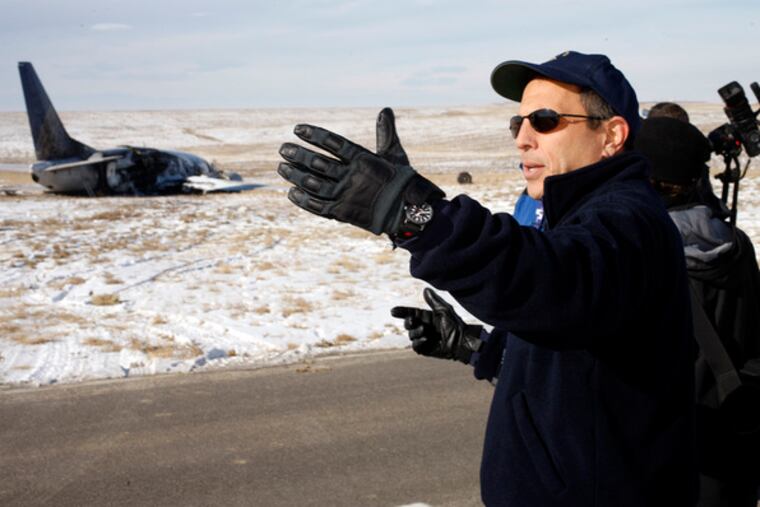NTSB officials scour jet wreckage in Denver accident
The plane slid into a ravine Saturday. Of the 38 people injured, five were still in hospitals.

DENVER - Investigators climbed inside the cracked, charred wreckage of a Continental Airlines jet yesterday, seeking clues why it veered off a runway and slid nearly half a mile into a snow-covered ravine.
The twin-engine Boeing 737-500 still sat in the ravine where it came to rest after its aborted takeoff Saturday at Denver International Airport. Behind it, a 2,500-foot-long scar through the grass and snow marked the jet's path.
National Transportation Safety Board investigators conducted preliminary reviews Sunday of the cockpit voice recorder and flight data recorder, agency spokesman Peter Knudson said.
No information has been released, but Knudson said "we do have good data" from the recorders. The NTSB said nothing had been ruled out as a potential cause.
Investigators planned to interview the captain and the first officer yesterday, but it was not immediately clear whether that had happened by early evening. Continental spokeswoman Kelly Cripe said the captain was injured and still hospitalized yesterday, but she declined to release his condition.
Both the captain and the first officer had clean safety records with the Federal Aviation Administration, FAA spokesman Ian Gregor said. He would not release their names.
FAA records show that the jet, built in 1994, had to make an emergency landing in Denver in 1995 when one of its two engines failed, but it touched down safely and no injuries were reported. The engine was replaced.
The latest accident forced the 115 passengers and crew aboard Houston-bound Flight 1404 to flee through emergency exits as the plane burned. It had shed its left engine and both main landing gears. The entire right side of the jet was burned, and melted plastic from overhead compartments dripped onto the seats.
Of the 38 people injured, five remained in Denver hospitals yesterday, including the captain, Continental said. Hospital officials said one person was in serious condition.
The weather was clear and cold when the plane tried to take off about 6:20 p.m. Saturday. Winds at the airport were 31 m.p.h., the FAA said. "No other aircraft opted against taking off due to wind" before Flight 1404 tried to lift off, Gregor said.
The plane veered off course about 2,000 feet from the end of the runway and did not appear to have gotten airborne, city aviation manager Kim Day said.